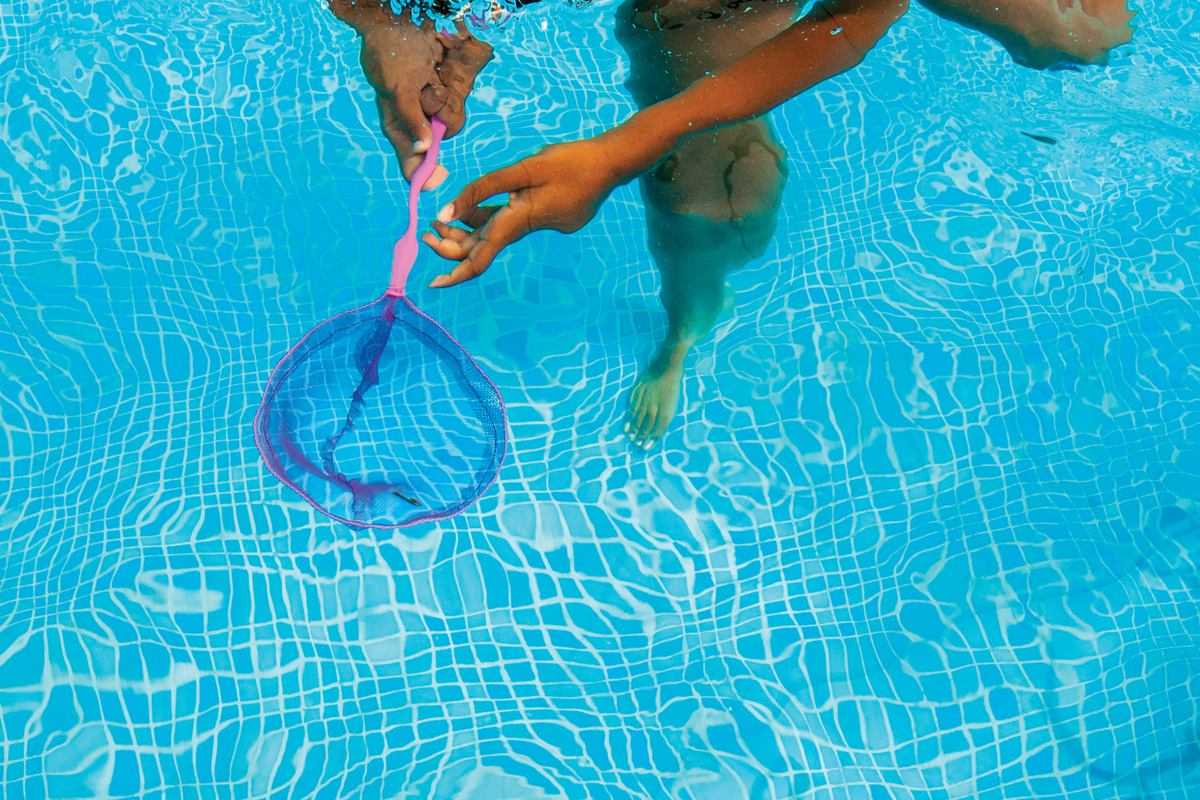Suit Up

Working around beautiful pools all day sounds nice in theory, but when a repair or touch-up needs to happen in a customer pool, service pros must plan and prepare. No, we’re not talking about tools and materials here — we’re talking about the logistics of looking and staying professional when you may need to get in and out of water on the job.
Beau DeRohan owner of Great White Pool & Spa in Boise, Idaho, says his team, like many other pool service pros, doesn’t have to get in very often. He estimates he gets 10 to 20 calls per year where they have to actually get in water, so for him it’s fairly easy to plan for.
“I forewarn [customers and say] ‘Hey, in this situation there’s a chance I’m going to have to get in your pool.’ And most people don’t care,” DeRohan says.
Christine Pearson, owner of Excalibur Leak Detection in Columbia, Maryland, regularly gets in and out of pools for her service. She agrees pool pros should always try to forewarn customers before they arrive.
“Tell the customer you need to get into the pool and explain why,” Pearson says. “Most misunderstandings happen when the customer is uninformed. Explain what you will do while you are in the water and approximately how long it will take if you have an estimation.”
If you’re on a service call and an unexpected situation arises, Pearson says it’s best to leave it up to the homeowner before just getting in.
“Ask them if they are OK with you doing the work today or if they would prefer you schedule it for a different time/date,” Pearson explains. “Make sure to inform them of any additional fees they may incur for a separate visit.”
Pearson has an entire changing station in her cargo van but realizes this isn’t realistic for many in the industry. She recommends having proper swim attire under clothing.
“Never ask to use a customer’s bathroom [to change],” Pearson says. “I tell my techs to kindly refuse even if it is offered, as there can be separate liability issues once you enter the residence.”
DeRohan also does not recommend changing in a customer’s home.
“I bring a towel or two, and I wear my board shorts for the day,” DeRohan says.
Chris Bowen, president of Bowen Pools in Flower Mound, Texas, says he always asks his tech team to change at the office before going on the call.
“We require repair technicians to bring a towel and a change of clothes if they know they’re doing a light repair in a pool that’s still full,” Bowen says. “We don’t require anything special as far as swimsuits go. It’s up to them.”
Andrea Nannini, owner of Hibiscus Pool & Spa in Port St. Lucie, Florida, says as a woman in the industry it can be more difficult to plan, but for her things are pretty casual being in the Sunshine State.
“Nobody really cares if I have to enter the pool,” Nannini says. “They know it’s hot [in Florida]. And as far as uniforms go, it’s pretty laid back down here. As long as you’re wearing a company shirt, the [type of] bottoms don’t really matter. You’ll see [employees] wearing bathing suits, shorts and flip flops.”
Once it’s time to enter the pool to service or repair it, Pearson recommends entering from the steps or ladder versus jumping in, and working quickly and cleanly.
“Make sure you try to remove any debris you may create while you are working underwater,” Pearson says. “Having a fine mesh bag handy can be helpful with this, especially if you are replacing an old epoxy patch with a new one or doing an underwater crack repair where some loose plaster will be removed. Your customer will appreciate the effort even if you cannot remove it all.”
DeRohan says he always brings a pool vacuum as well, just in case.
After the service is finished, Pearson says to make sure there is appropriate curtain coverage on vehicles if you’re changing in the back. Otherwise, changing in public is possible if you plan it right.
“I recommend you ditch the towel around the waist to avoid the dreaded towel drop and purchase a quick-change product,” Pearson says. She recommends a changing poncho like the Easy Change Sport or The UnDress for women.
If you prefer to go the simple route, DeRohan reminds that air drying is always an easy option.
“I’m an air-dry guy,” DeRohan says. “I use a towel and then by the time I’m on my next job, I’m pretty much as dry as I was.”
Above all else, make sure you’re communicating with customers. “I try to be prepared and as transparent with customers with everything that I do, so they know what to expect,” DeRohan says. “There should be no surprises.”






